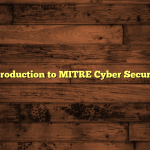diamond model cyber security
Table of Contents:
- What Is the Diamond Model?
- The Four Core Elements
- 1. Adversary
- 2. Infrastructure
- 3. Capability
- 4. Victim
- How Does It Help Cybersecurity?
- Practical Example: Ransomware Ecosystem Using Diamond Model Lens
- Conclusion
- FAQ
The Diamond Model of Intrusion Analysis
Are you tired of chasing shadows in your cybersecurity efforts? A structured method is what you need. The Diamond Model of Intrusion Analysis, a celebrated framework in cybersecurity, assists analysts in dissecting, furthermore understanding cyberattacks. It achieves this by focusing on four main parts: Adversary, Infrastructure, Capability, as well as Victim.
What Is the Diamond Model?
Essentially, the Diamond Model pictures cyber intrusions as a diamond shape. At each corner is one of the central parts involved in an attack. By studying these parts individually and how they relate, security specialists gain a full picture of an intrusion. This picture goes further than just IP addresses or malware hashes.
This method differs from other models like the MITRE ATT&CK framework or kill chain models. Those models focus mostly on tactics and techniques. However, they do not fully connect every part of an attack. The Diamond Model provides a complete view. With it, analysts derive intelligence by grasping not only what took place – however, who was responsible, what instruments were employed, where the attack began (infrastructure), also who was targeted .
The Four Core Elements
1. Adversary
The adversary represents “who” is conducting the attack. It ranges from individual hackers, sometimes called script kiddies, to nation-state actors, which are sophisticated, or organized cybercriminal groups. Within this, two roles are important:
- Adversary Operator – This represents the person or group directly carrying out the attack.
- Adversary Customer – This signifies the entity gaining from the attack.
For instance, modern ransomware operations involve several teams. One team may provide credentials. Another ransomware group licenses their malware. Affiliates, on the other hand, execute attacks on victims .
Understanding adversaries helps you predict their motives – such as profit, espionage, sabotage – and tailor defenses appropriately.
2. Infrastructure
Infrastructure includes all technical resources the adversaries use during an intrusion. This consists of servers for command-and-control systems (C2), domains employed for phishing campaigns, next to IP addresses used to start attacks, or remove data.
By mapping infrastructure across incidents, analysts can recognize patterns. For instance, they could find recurring domains, alternatively IP ranges, linked to threat actors . This insight enables them to block malicious infrastructure early, preventing damage.
3. Capability
Capability consists of all instruments and methods attackers employ – their “arsenal.” It contains malware varieties spread during attacks. However, it also includes broader tactics like social engineering methods (e.g., phishing emails), software vulnerabilities targeted by exploitation frameworks, lateral movement inside networks, after initial access, along with so on .
Tracking capabilities reveals evolving attacker ability, guiding defensive strategies like patch prioritizing, furthermore user awareness training.
4. Victim
Victims are those targeted by cyberattacks. It could be individuals inside companies (like executives), whole businesses spanning sectors (finance, furthermore healthcare), geographical areas experiencing geopolitical stress or email addresses, or domains specifically selected for spear-phishing campaigns .
Profiling victims helps defenders in understanding target selection based on value, such as intellectual property theft compared to financial fraud. It also allows tailored risk assessments aligned with compliance regulations for data protection.
How Does It Help Cybersecurity?
The strength of the Diamond Model is in connecting the parts of an intrusion, rather than treating them independently:
- Attack Mapping – Breaking down incidents into the four categories brings clarity to all involved.
- Relationship Analysis – Seeing links between adversary ability, infrastructure, together with victim profiles uncovers patterns.
- Pattern Recognition – Spotting shared qualities across events helps attribution.
- Predictive Insights – Knowing attacker actions lets anticipation.
- Enhanced Communication – A common vocabulary is established among security teams. This encourages collaboration, both internally and externally, for threat intelligence sharing .
This indicates that, if your SOC team notices suspicious activity repeating through infrastructure connected to an adversary with known ability aiming at similar victims, you escalate response swiftly. You acknowledge a persistent actor, not an isolated incident .
Practical Example: Ransomware Ecosystem Using Diamond Model Lens
Consider modern ransomware operations, in which parties collaborate:
- A broker selling credentials.
- A group licenses ransomware software.
- Affiliates attack, targeting healthcare providers who require uptime.
Applying this to the diamond model:
| Element | Description |
| Adversary | Multiple roles: brokers, furthermore affiliates |
| Infrastructure | C2 servers hosting ransomware control panels |
| Capability | Ransomware + phishing kits + lateral movement |
| Victim | Healthcare organizations |
This illustrates operational complexity, helping defenders discover weak areas. For instance, disrupting infrastructure may halt affiliate actions, even if the ransom continues elsewhere .
Conclusion
The Diamond Model offers cybersecurity professionals a clear method to examine intrusions through the four points: adversary, capability, infrastructure, in addition to victim. Together, they show deeper awareness of threats, going further than traditional methods that focused solely on IP addresses or signatures.
By using this model, organizations improve not only detection, nevertheless prediction of attacker behavior. There is also better communication among teams responding to incidents, furthermore those sharing threat intelligence. These factors support risk governance aligned with compliance mandates .
Ultimately, if you are after smarter examination connecting all pieces, not just fragments, the Diamond Model is worth mastering.
FAQ
What is the main benefit of using the Diamond Model?
Its main advantage is giving a complete view of cyberattacks. This allows deeper insight than single indicators like IP addresses or malware signatures.
Who can use the Diamond Model?
Cybersecurity experts, security operations centers (SOCs), incident response teams, also threat intelligence analysts can all use it.
Is it complex to learn?
The framework is easy to grasp. However, applying it demands practice and skill in analyzing data.
How does it improve threat intelligence sharing?
It provides a shared vocabulary. This permits clearer communication among teams, as well as better external intelligence sharing.
Resources & References:
- https://www.youtube.com/watch?v=w8mEG52tfsY
- https://threatconnect.com/glossary/diamond-model/
- https://feedly.com/new-features/posts/prompt-engineering-conduct-a-diamond-model-of-intrusion-analysis
- https://www.ituonline.com/comptia-securityx/comptia-securityx-1/diamond-model-of-intrusion-analysis-a-framework-for-advanced-threat-intelligence/
- https://www.jalblas.com/blog/tryhackme-diamond-model-walkthrough-soc-level-1/





